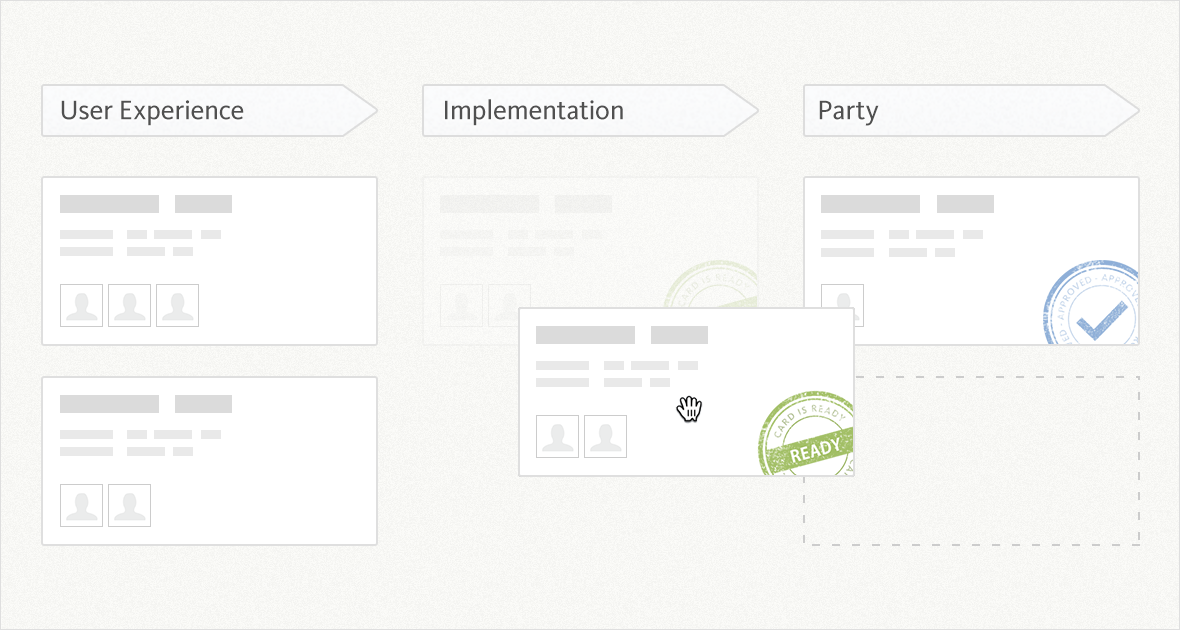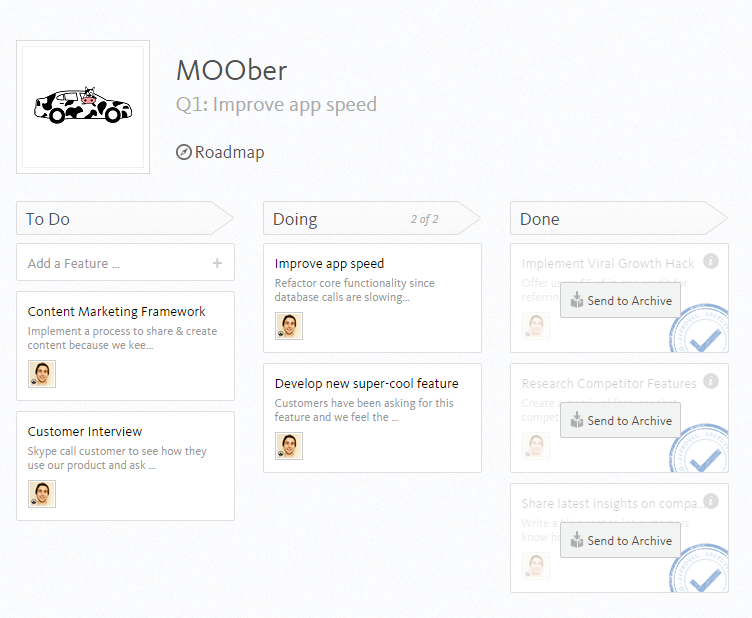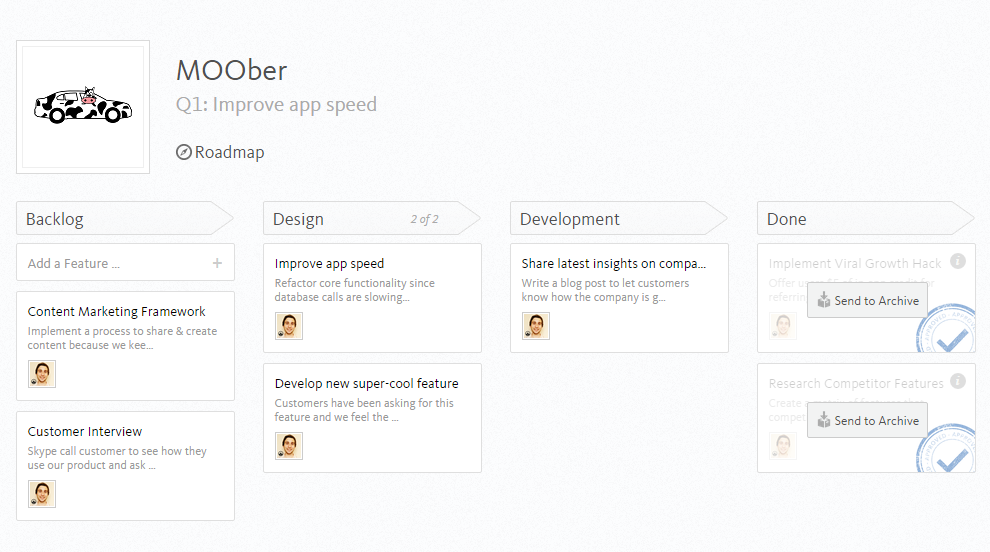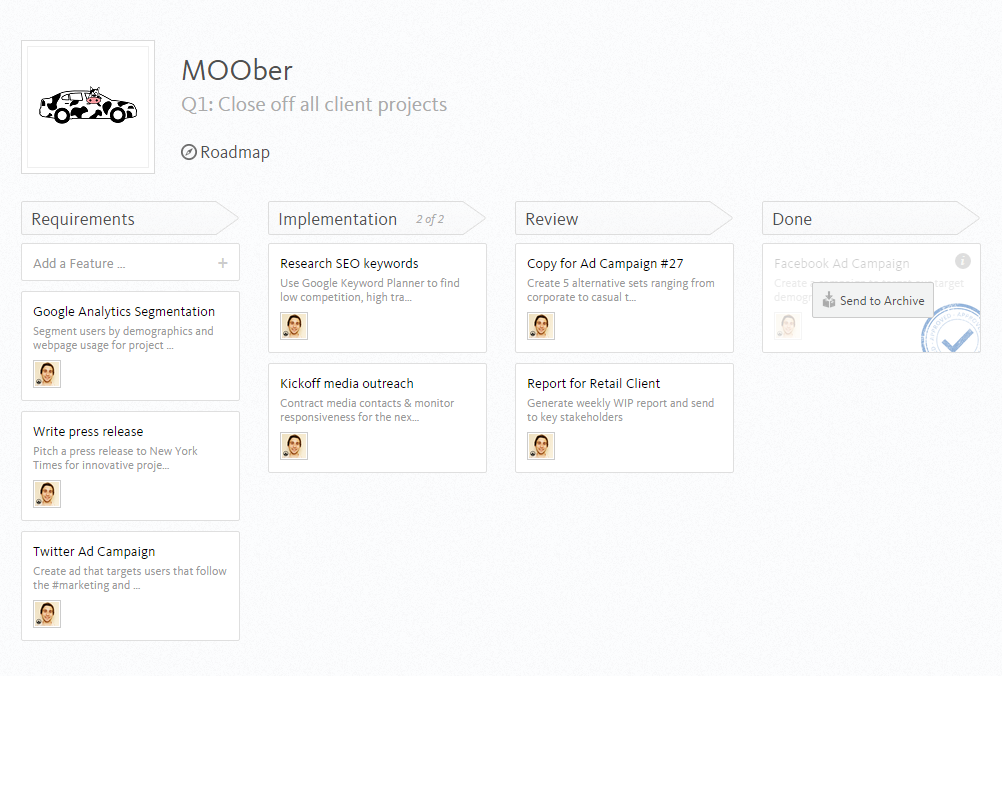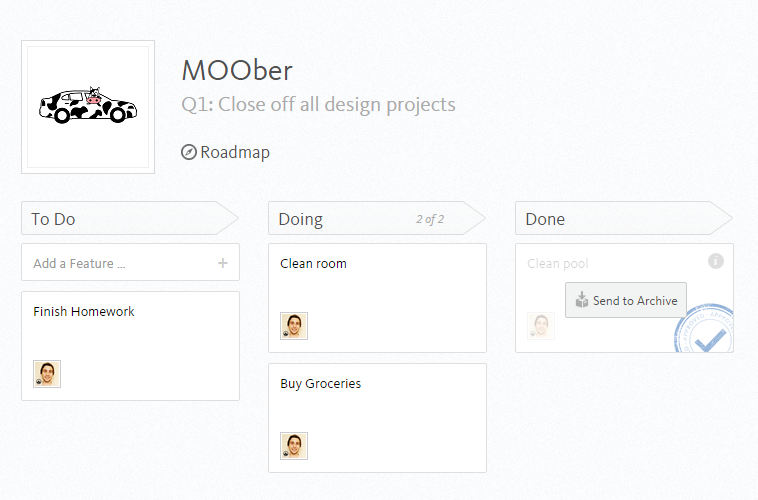The key to a successful kanban workflow is to continuously improve it. You can improve your process by visualizing metrics to help you action the visible bottlenecks.
But how do you define a workflow process to begin with?
We’ll go through 7 kanban board examples to inspire you and your team:
- Product development
- Sales
- Marketing
- Design
- Software development
- Agencies / Consultancy firms
- At home / personal
Product Development
The aim of a product team is to produce features, fix bugs and resolve issues.
Workflow: To do > Doing > Done
Sales
The aim of a sales team is to get leads and close deals.
Workflow: Lead > Research > Engagement > Done
Marketing
The aim of a marketing team is to put a product into their right people’s minds to generate leads.
Workflow: Requirements > Implementation > Marketing > Done
Design
The aim of the design team is to create interfaces and experiences for products which ‘wow’ customers.
Workflow: UI/UX > Prototype > Implementation > Done
Software development
The aim of software development teams is to complete software projects.
Workflow: Backlog > Design > Development > Done
Agencies / Consultancy firms
The aim of an agency is to complete projects for their clients.
Workflow: Requirements > Implementation > Review > Done
Customize this for each client and/or project.
At home / person
You can manage your personal projects, or even your family life, with a kanban board!
Workflow: To Do > Doing > Done
As you can see, kanban boards and workflows come in a variety of shapes and (column) sizes. There is no ‘best’, but with continuous improvement, you can create the most efficient version of your workflow in your kanban board.
Have a different workflow or board? Share it with us!
